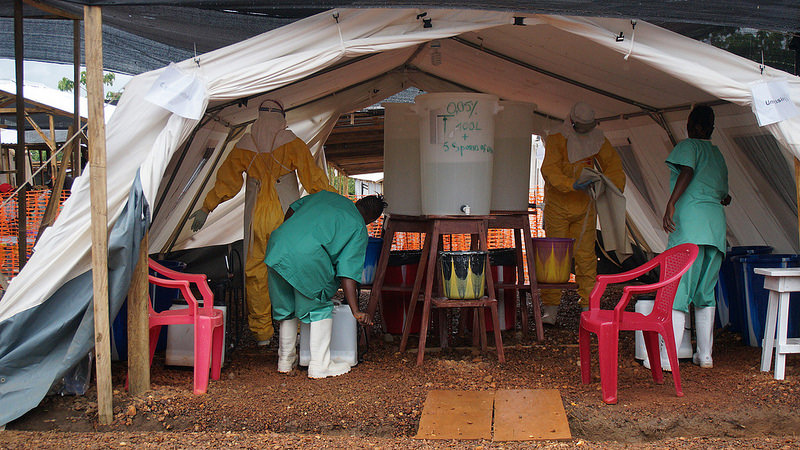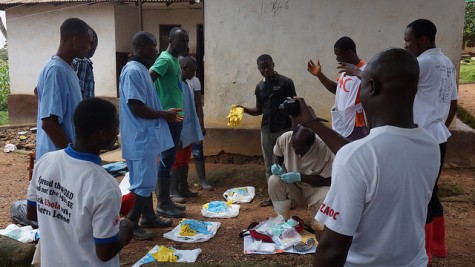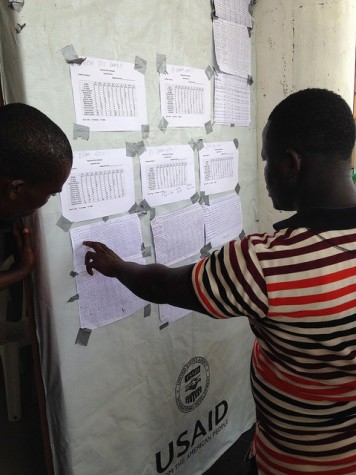Welcome to “Off Our Meds,” a weeklong series in which LWON examines some scary issues in medicine. We won’t resort to fear mongering, because we don’t have to. Medicine is scary enough as it is. 
Last week, over at The Atlantic, Jacoba Urist wrote about a truism in journalism: deaths closer to home matter more.
This sounds ugly but makes sense intuitively. We feel the death of a loved one in a completely different way than a death across town, let alone a death across the country. It’s not surprising that news coverage reflects a similar ethos.
Proximity is both geographic and cultural. Think of the racist old adage from across the other Atlantic: “1000 wogs, 50 frogs, and a single Briton.” And, Urist writes, violence and novelty play into newsworthiness, too. “A tornado that kills schoolchildren is horribly sad; a young man who guns down kindergarteners holds a mirror to the society in which he lives.”
This means that pretty much all factors are working against good coverage of the Ebola epidemic right now. Until last week, Ebola had only hit countries that most Americans have never even contemplated visiting. And the bump in coverage caused by the diagnosis in Texas has been more about the disease hitting the U.S. than about the thousands dying in Africa. 
Plus, as the Washington Post recently noted, there’s more than enough violence competing for our attention.
Yet the Ebola epidemic in West Africa has the potential to kill as many if not more people than any armed faction in the news right now. On September 24, the Center for Disease Control released an analysis arguing that this is just the beginning. CDC projections show the epidemic could affect between 550,000 to 1.4 million people by January if the international response doesn’t improve. We’ll come back to that last point soon, but for now, let’s stick with the numbers. A WHO analysis released the same day noted that this strain of Ebola is killing about 70 percent of people it infects, meaning the 550,000 case—the CDC’s lower number—could produce 385,000 deaths. That’s the death toll of a good-sized, many-year civil war. In about 10 months.
How could that happen so quickly? At the end of August, there were 3,069 known cases. At the end of September, the total was 7,157.
The numbers are still in the thousands, but look at how quickly they’re growing. The CDC estimates the number of cases is doubling every 15-20 days In Liberia and every 30-40 days in Sierra Leone. The World Health Organization, which released a separate analysis the same day the CDC projections came out, estimated doubling times were 24 days in Liberia and every 30 days in Sierra Leone. Those kinds of doubling times produce growth curves that look like this. The WHO team also made future projections. Those are more conservative than the CDC’s, in part because they only go through November 2, at which point they project 20,000 cases.
The CDC and WHO did different things. And in some ways, the WHO paper is the most compelling. It provides the most detailed description of the epidemic to date, with demographic and geographic breakdowns that can help with planning. WHO researchers also estimated the case fatality rate—the 70 percent death toll I cited above, and the reproductive number.
The reproductive number (R) for a disease is the number of people one sick person will infect. If R is greater than 1—if a sick person will cause more than one new infection—the epidemic will grow. If it’s less than 1, the epidemic will die out. WHO estimated that at the start of this epidemic, the reproductive number for Ebola was 1.71 in Guinea, 1.83 in Liberia, and 2.02 in Sierra Leone. By August, R was still above 1 in all three, but it appeared to be coming down in Liberia and Sierra Leone; the situation in Guinea was less clear. 
None of this is to say the CDC analysis wasn’t important, too. Looking months into the future is a good idea. And the CDC researchers did something the WHO analysis failed to do—they estimated the number of cases that have not made it into official tallies. That’s how they came up with the 1.4 million figure. However, as both the paper and officials repeatedly noted, the 550,000 to 1.4 million numbers represent a possible “worst case” outcome—one that could happen if there were no effort to slow the epidemic.
“I think we’ve said clearly we don’t think that will come to pass,” said CDC Director Dr. Tom Frieden, in a media briefing the morning the report was released. Frieden noted that they had also modeled interventions that could shut the epidemic down. (WHO’s decreasing reproductive numbers suggest that such efforts may already be being felt.)
The response won’t be easy. “When I looked at the model results, the thing that made the biggest impact on me was… that for each day that we’re not effectively isolating people, not only are people potentially dying and potentially affecting others, but the job of stopping the outbreak, turning it around, gets much bigger and much, much more difficult,” said Frieden.
There’s still no approved medicine or vaccine for Ebola. There’s no way to avoid tens of thousands of deaths. But the reports suggest that an ambitious effort to care for and isolate patients could stop the death toll from reaching worst case scenario proportions. Still, when two studies came out, most journalists led with the 1.4 million possible cases. As did I in this piece. Because, as much as I hate racist old adages about the worth of one death, I did want you to read this.
Robin Mejia is a journalist and PhD student in biostatistics at UC Berkeley.
Image credits: Health works and mobile clinic, European Commission DG ECHO; Physician Assistant schedule at , Liberia, USAID.
I read this last night and felt sick. Supplies are there, but……. http://www.nytimes.com/2014/10/06/world/africa/sierra-leone-ebola-medical-supplies-delayed-docks.html?module=Search&mabReward=relbias%3Ar%2C%7B%221%22%3A%22RI%3A6%22%7D&_r=0
thanks for a very good article